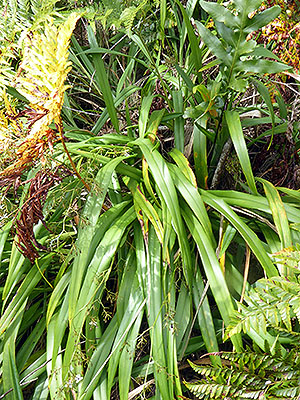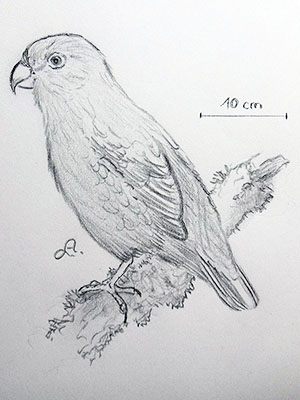Skottsberg’s Diving Beetle (Allodessus skottsbergi)
Skottsberg’s Diving Beetle was described in 1924, it is known only from the island of Rapa Nui.
The species reaches a body length of about 0,2 to 0,23 cm and is yellowish to ferruginous colored, males and females are superficially identical.
The beetle inhabits the crater lakes of Rapa Nui, where it lives among algae, it is a predacious species. [1][2]
***
The beetle is known already from subfossil core samples, where its remains can be found at a depth of about 15,5 m, in sediments that were deposited before the first Polynesian settlers appeared, which means that the species indeed is at least native to Rapa Nui, perhaps even endemic. [4]
***
Skottsberg’s Diving Beetle was apparently not recorded during recent field studies and may in fact already join the list of extinct species. [3]
***
syn. Bidessus skottsbergi Zimmermann, Liodessus skottsbergi (Zimmermann)
*********************
References:
[1] A. Zimmermann: Coeloptera-Dytiscidae von Juan Fernandez und der Osterinsel. in The Natural history of Juan Fernandez and Easter Island, edited by Carl Skottsberg. Vol. 3: 299-304., Zoology. Uppsala: Almqvist & Wiksells Boktryckeri, 1921-1940
[2] Michael Balke; Ignacio Ribera: Jumping across Wallace’s line: Allodessus Guignot and Limbodessus Guignot revisited (Coleoptera: Dytiscidae, Bidessini) based on molecular-phylogenetic and morphological data. Australian Journal of Entomology 43(2): 114-128. 2004
[3] Konjev Desender; Léon Baert: The Coleoptera of Easter Island. Bulletin de l’Institut royal des Sciences naturelles de Belgique. Entomologie 66: 27-50.1996
[4] M. Horrocks; M. Marra; W. T. Baisden; J. Flenley; D. Feek; L. González Nualart; S. Haoa-Cardinali; T. Edmunds Gorman: Pollen, phytoliths, arthropods and high-resolution 14C sampling from Rano Kau, Easter Island: evidence for late Quaternary environments, ant (Formicidae) distributions and human activity. Journal of Paleolimnology 50(4): 417-432. 2013
*********************
edited: 11.12.2018



